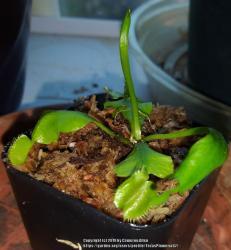I would think any good nursery supply or landscaping supply should have peat moss. And yes you should stay away from MiracleGro peat because it has fertilizer added. MiracleGro's is fine for seedlings & "regular" plants, but fertilizer will easily burn CP roots.
If you want Turface but can't find it you might ask the sports faculty at a high school or town recreation center to see if they can direct you to whoever provides it for their baseball fields. Plain old gravel will work, but I like the size of Turface - as I mentioned it looks about like kitty litter in texture (I use it in lots of different mixes, not just CPs).
Like many gardeners I have things I like for my mixes. I often think discussions about what a mix should contain should be in "alt.religion" blogs since people can have very strong beliefs about it. Bottom line though is what we can get our hands on, what our particular habits are (i.e. do I over or under water? that helps determine what I should use in my mixes), and what we grow; so please don't feel you have to use what I use. All that CPs need is a "sterile" mix (no nutrients) like peat moss. Adding sand, Perlite, Turface, or gravel "thins" the peat making it less "heavy", allowing constant moisture without all of the roots sitting in water. I would love to be able to visit a natural VFT locale just to be able to see what the natural soil looks like, but because of poaching and destruction of habitat those areas are off limits and stiff penalties are levied on trespassers. And with my luck I'd find snakes rather than the plants even if I had an authorized guide, so I visit them in civilization.
If you are not familiar with Sarracenia Northwest,
( www.growcarnivorousplants.com ), Jeff Dallas & Jacob Farin in my opinion, are fantastic sources of CP info. They have a lot of videos especially with their free newsletters (I think some of them may be on YouTube but don't quote me). They learned as a hobby from scratch like so many of us, and have built a successful business from that knowledge. They love sharing tips and ideas with fellow CP lovers and are very encouraging! I learned so much from their videos and web site about CPs in general as well as specific issues I was having with particular types (VTFs being at the head of that list). There are many others out there who have built businesses from a hobby/fascination with CPs who also are a wealth of information. I would think anyone with a business dealing exclusively in CPs would be a great source of help, and they have run into the same pitfalls we do, so see what information they have on their web sites, and don't be afraid to ask them... it's a passion with them!
